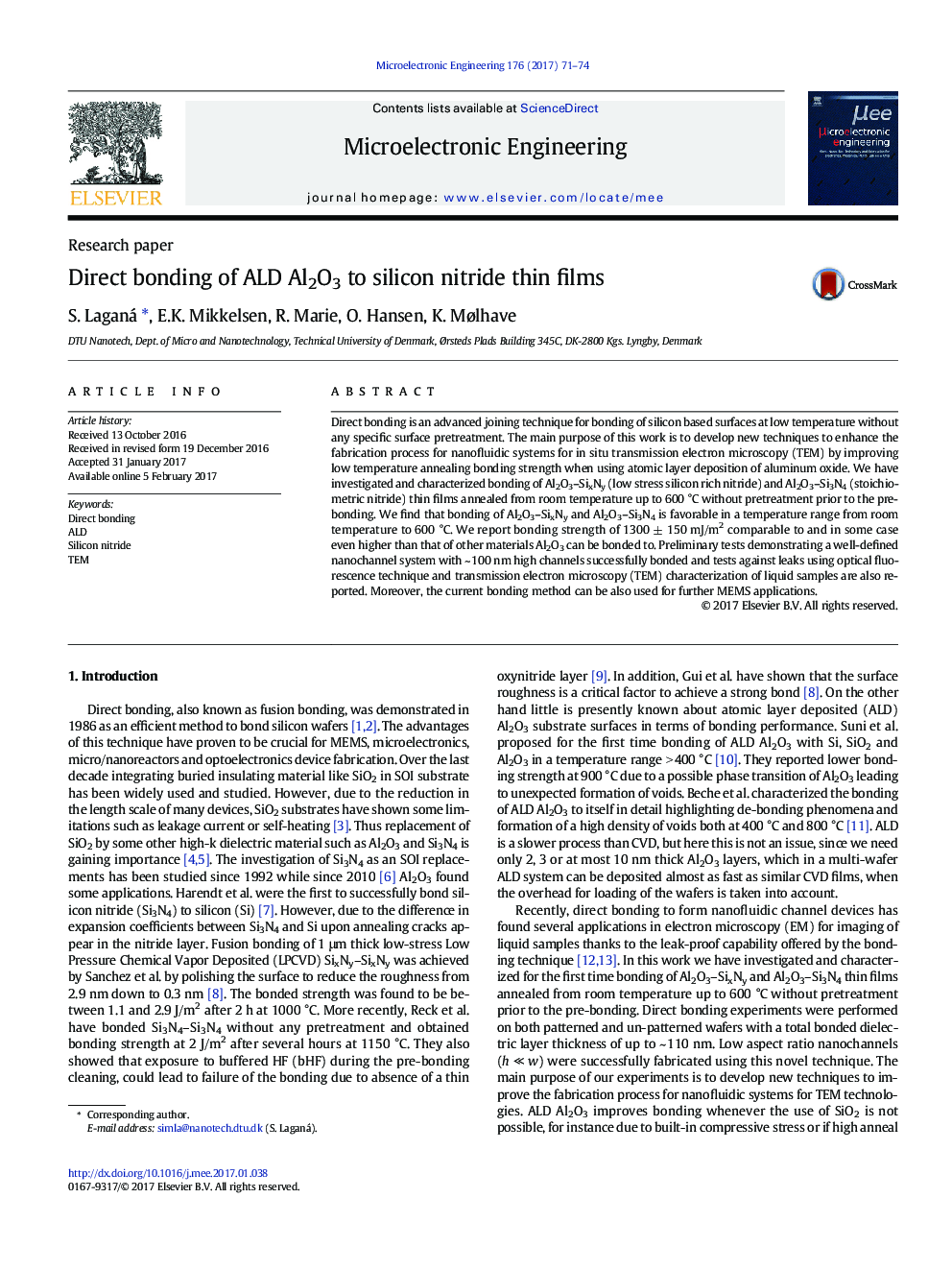| Article ID | Journal | Published Year | Pages | File Type |
|---|---|---|---|---|
| 4970927 | Microelectronic Engineering | 2017 | 4 Pages |
â¢A new direct bonding architecture involving Al2O3-SixNy and Al2O3-Si3N4 is proposed;â¢Bonding is favourable in a temperature range from room temperature up to 600 °C and we report bonding strength of 1300 ± 150 mJ/m2 comparable and in some cases high than that other materials Al2O3 can be bonded to;â¢A well-defined low aspect ratio nanochannel of ~ 100 nm tall is successfully bonded and tested against leaks using Fluorescence Microscopy and Transmission Electron Microscopy;
Direct bonding is an advanced joining technique for bonding of silicon based surfaces at low temperature without any specific surface pretreatment. The main purpose of this work is to develop new techniques to enhance the fabrication process for nanofluidic systems for in situ transmission electron microscopy (TEM) by improving low temperature annealing bonding strength when using atomic layer deposition of aluminum oxide. We have investigated and characterized bonding of Al2O3-SixNy (low stress silicon rich nitride) and Al2O3-Si3N4 (stoichiometric nitride) thin films annealed from room temperature up to 600 °C without pretreatment prior to the pre-bonding. We find that bonding of Al2O3-SixNy and Al2O3-Si3N4 is favorable in a temperature range from room temperature to 600 °C. We report bonding strength of 1300 ± 150 mJ/m2 comparable to and in some case even higher than that of other materials Al2O3 can be bonded to. Preliminary tests demonstrating a well-defined nanochannel system with ~ 100 nm high channels successfully bonded and tests against leaks using optical fluorescence technique and transmission electron microscopy (TEM) characterization of liquid samples are also reported. Moreover, the current bonding method can be also used for further MEMS applications.
Graphical abstractDirect bonding of silicon nitride thin film layer of ~Â 50Â nm onto ~Â 3Â nm of ALD Al2O3.Download high-res image (61KB)Download full-size image
